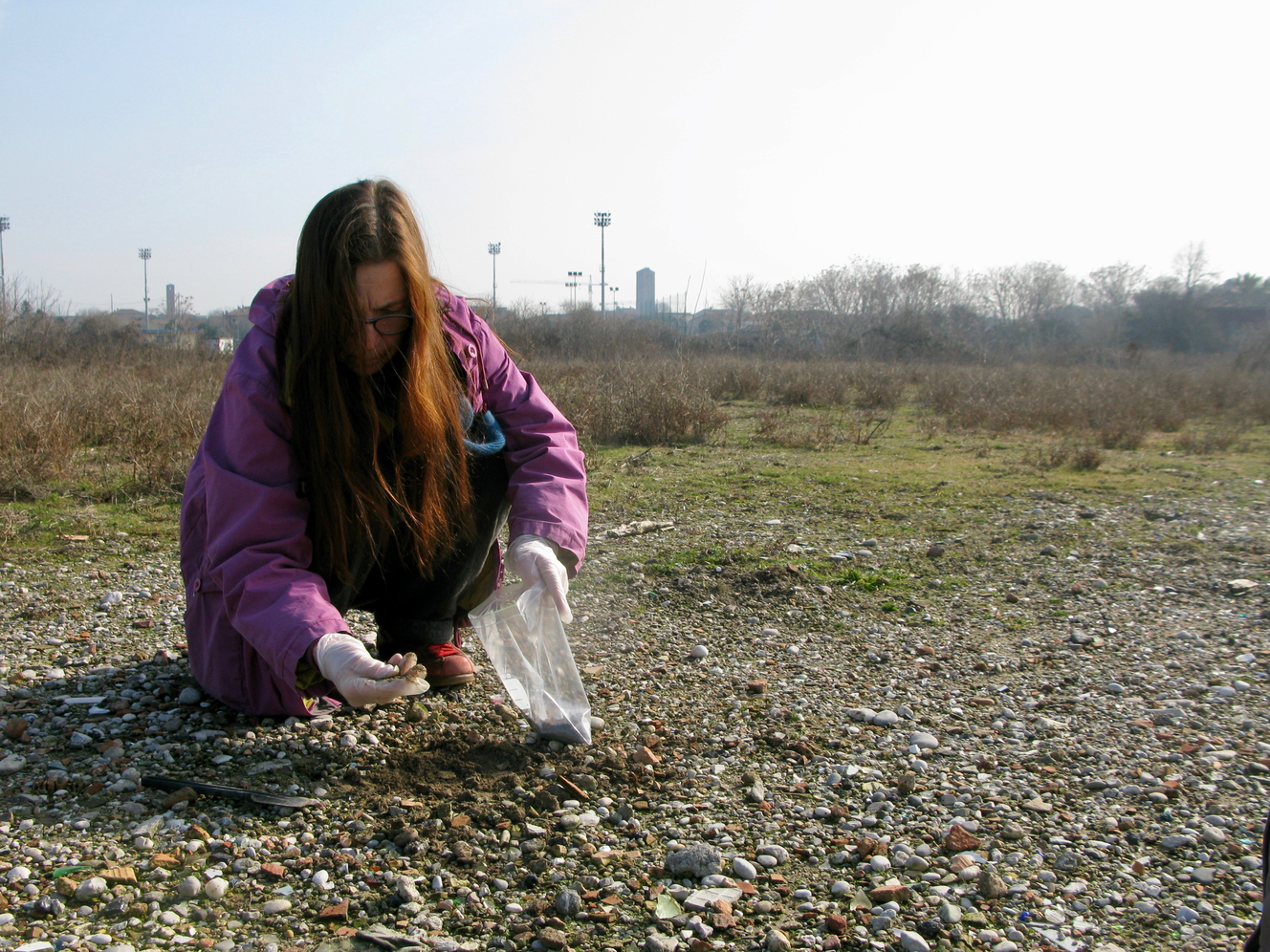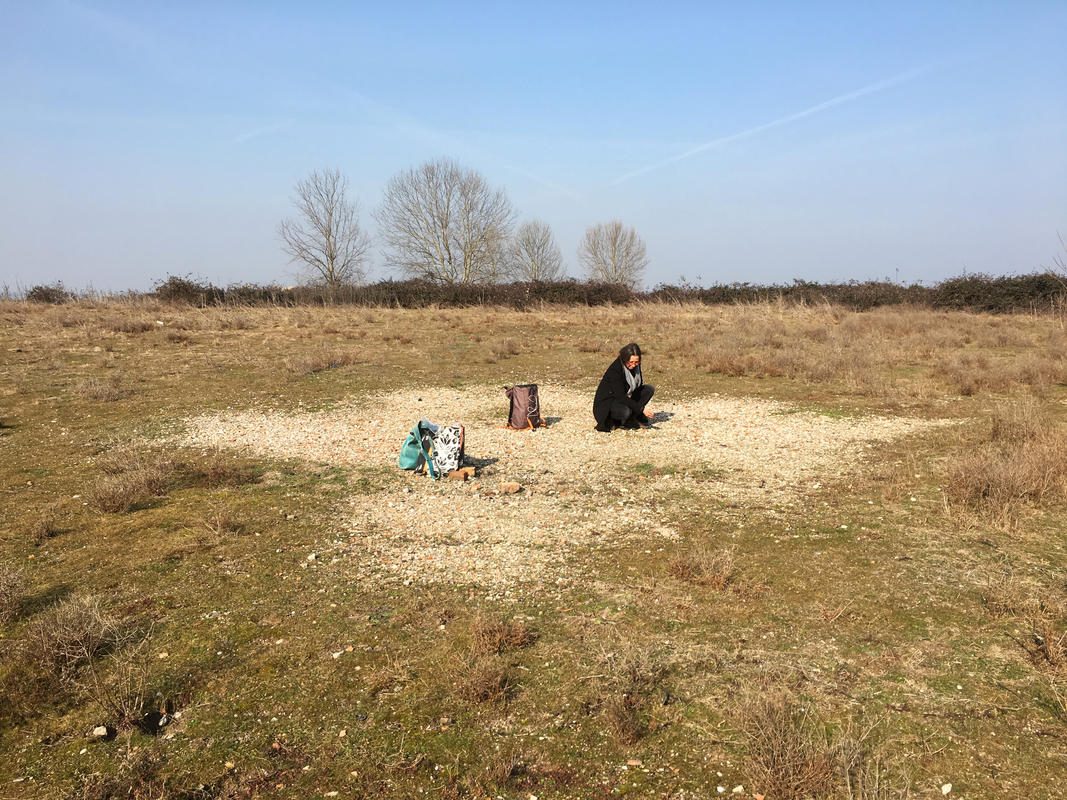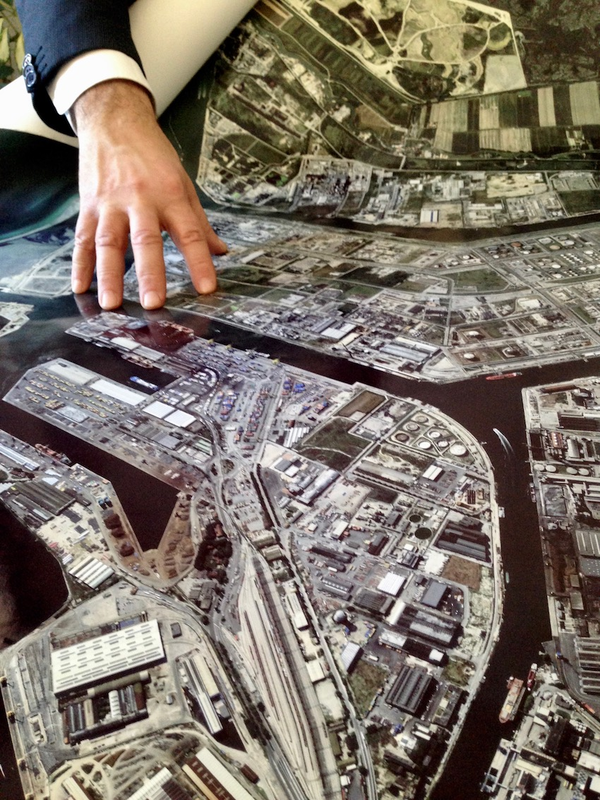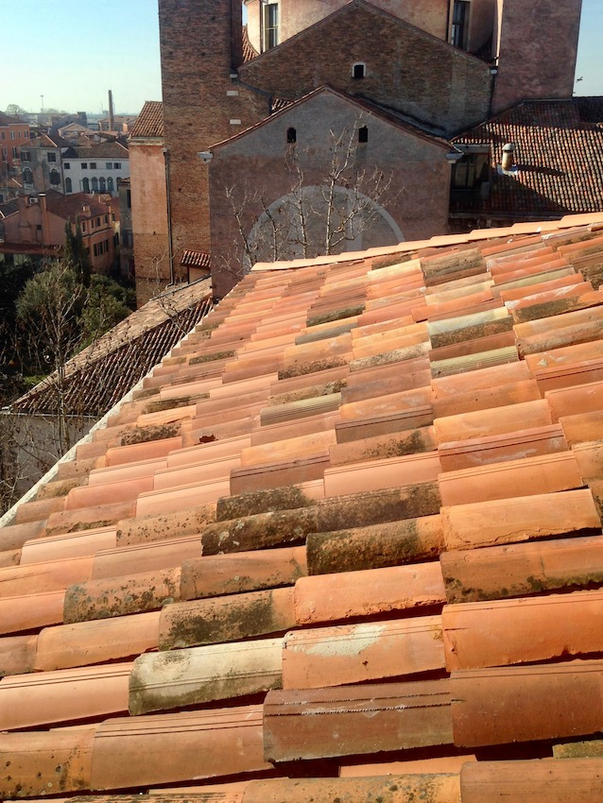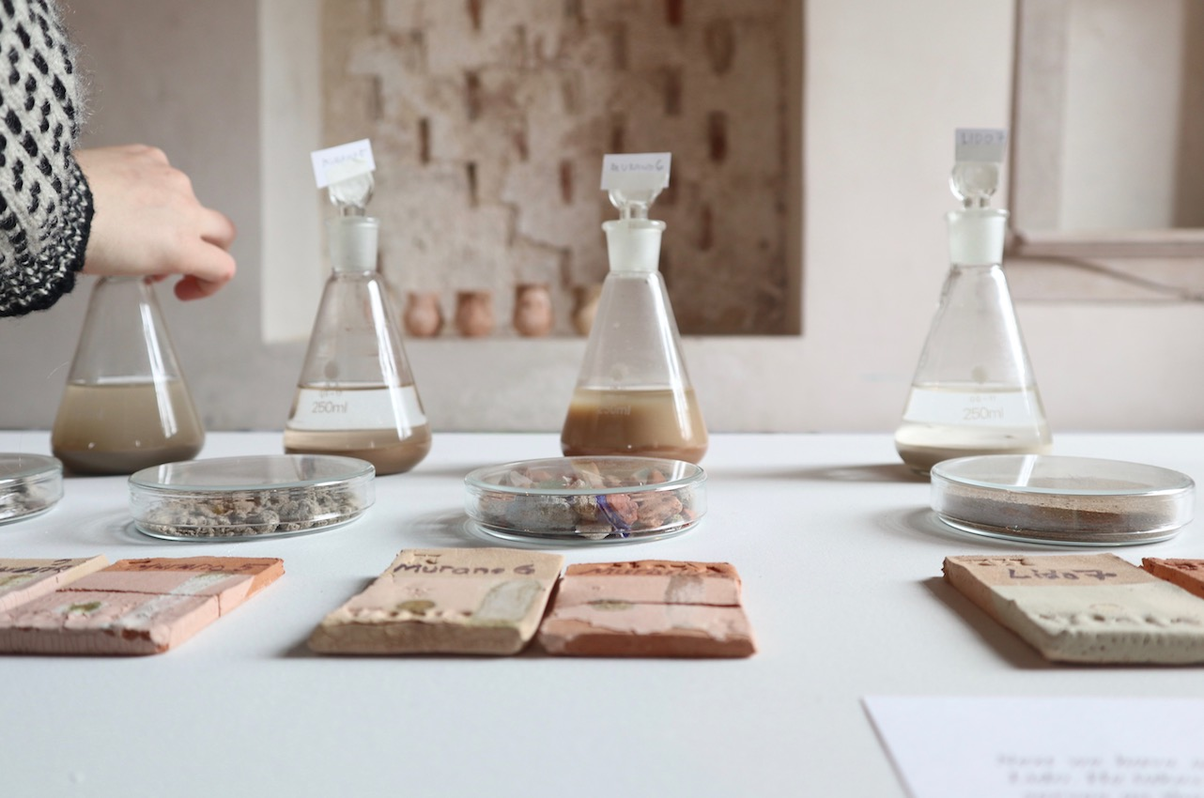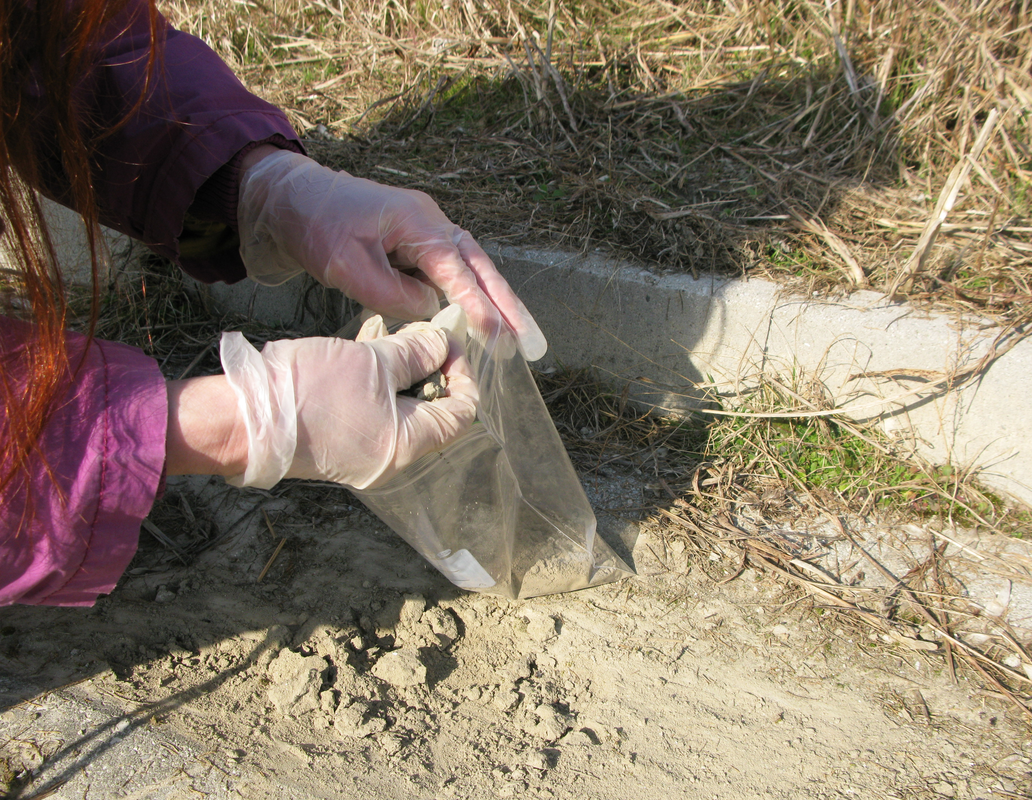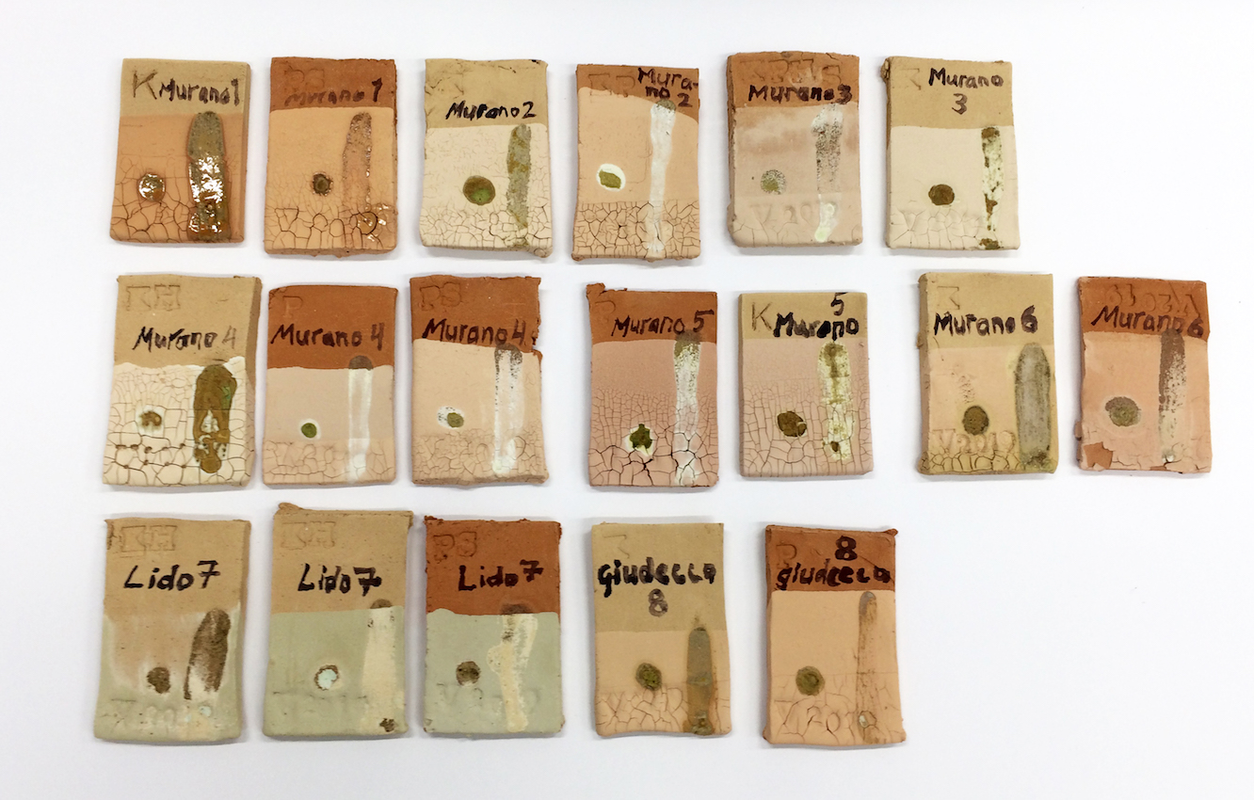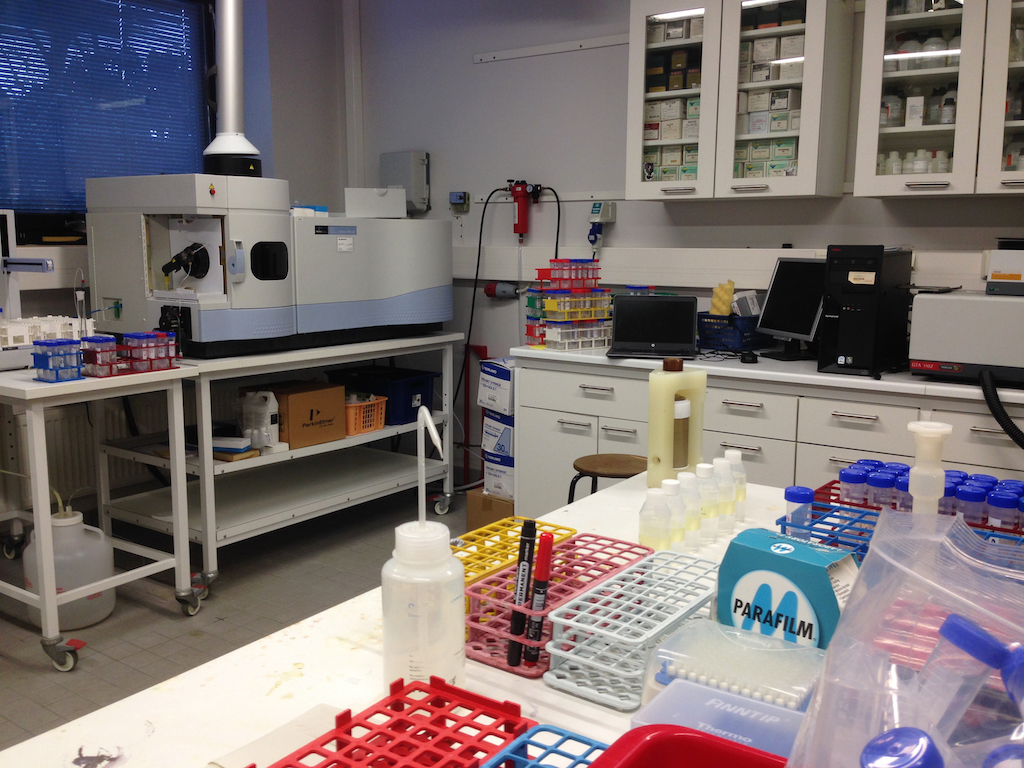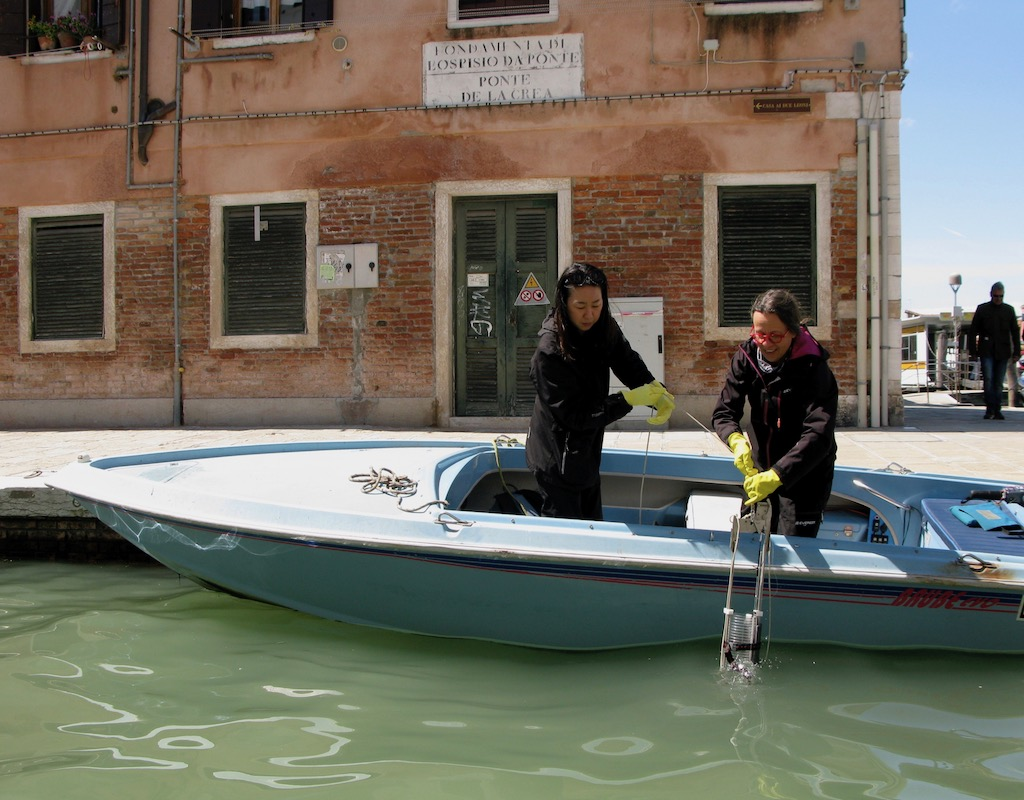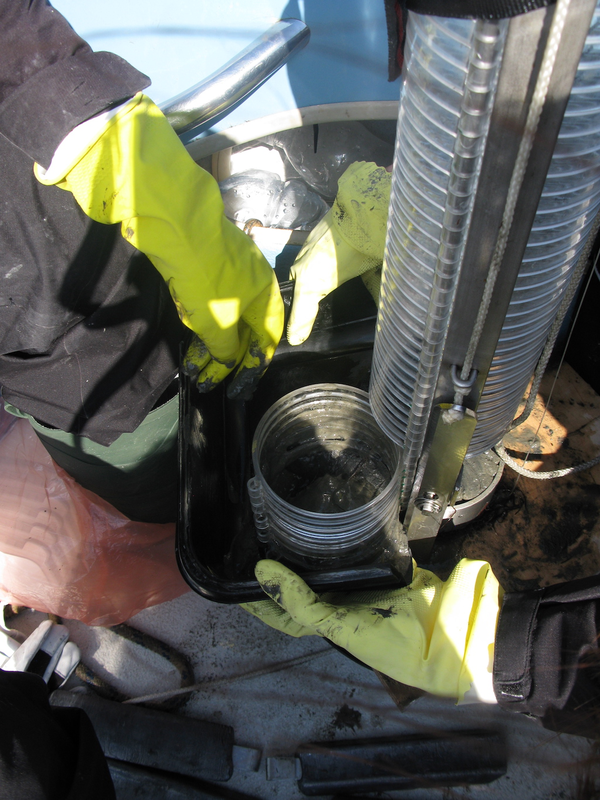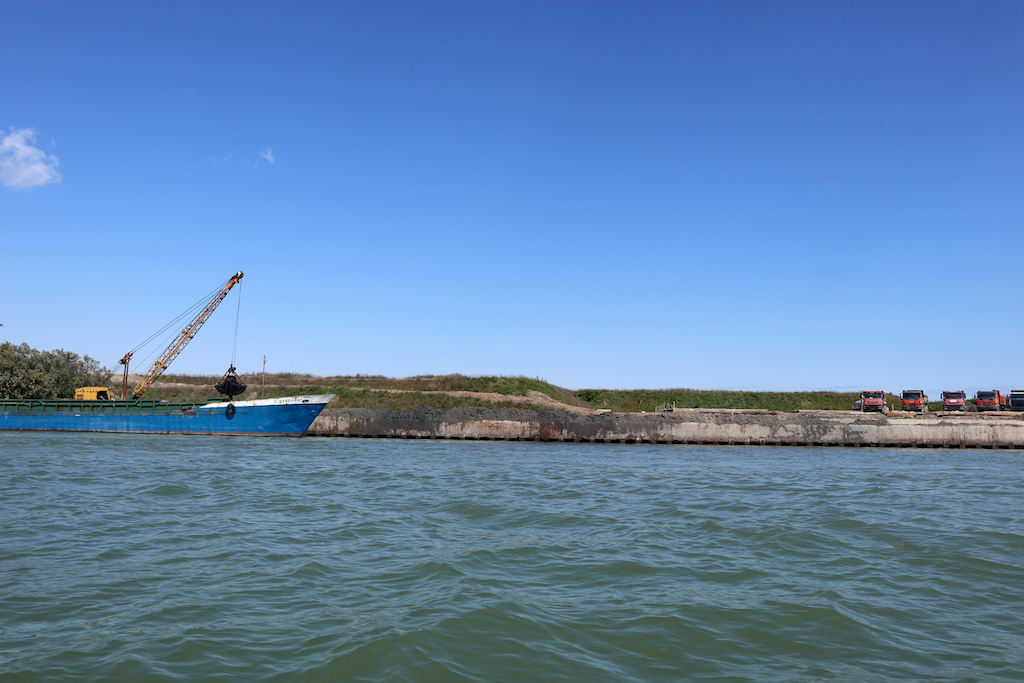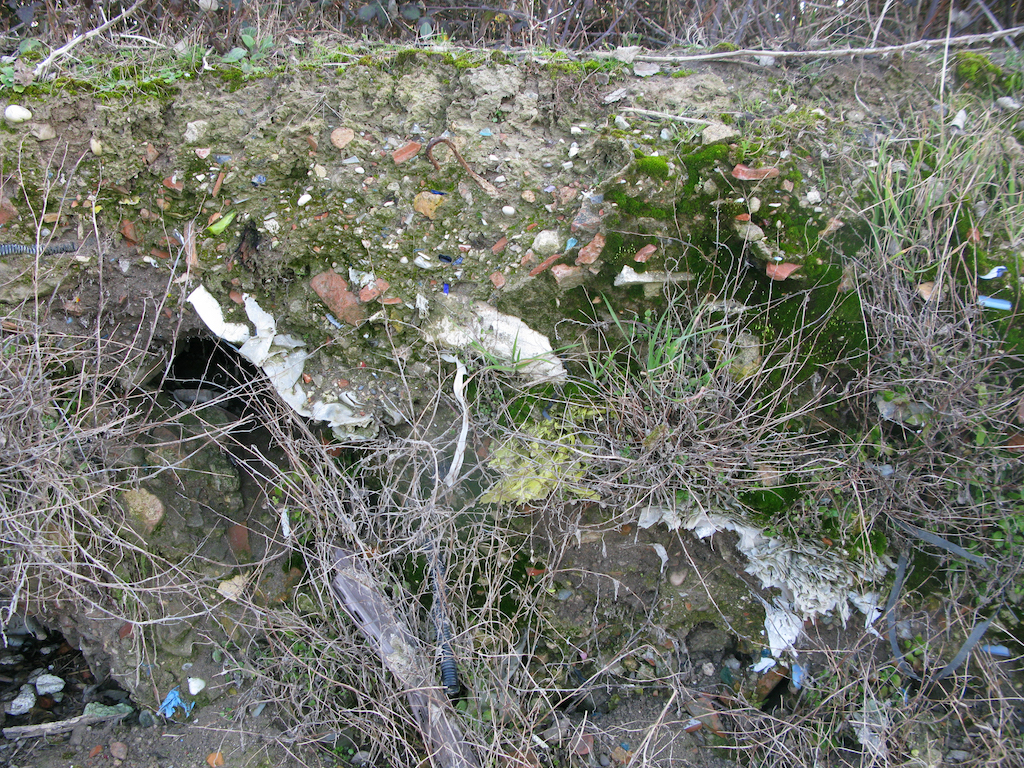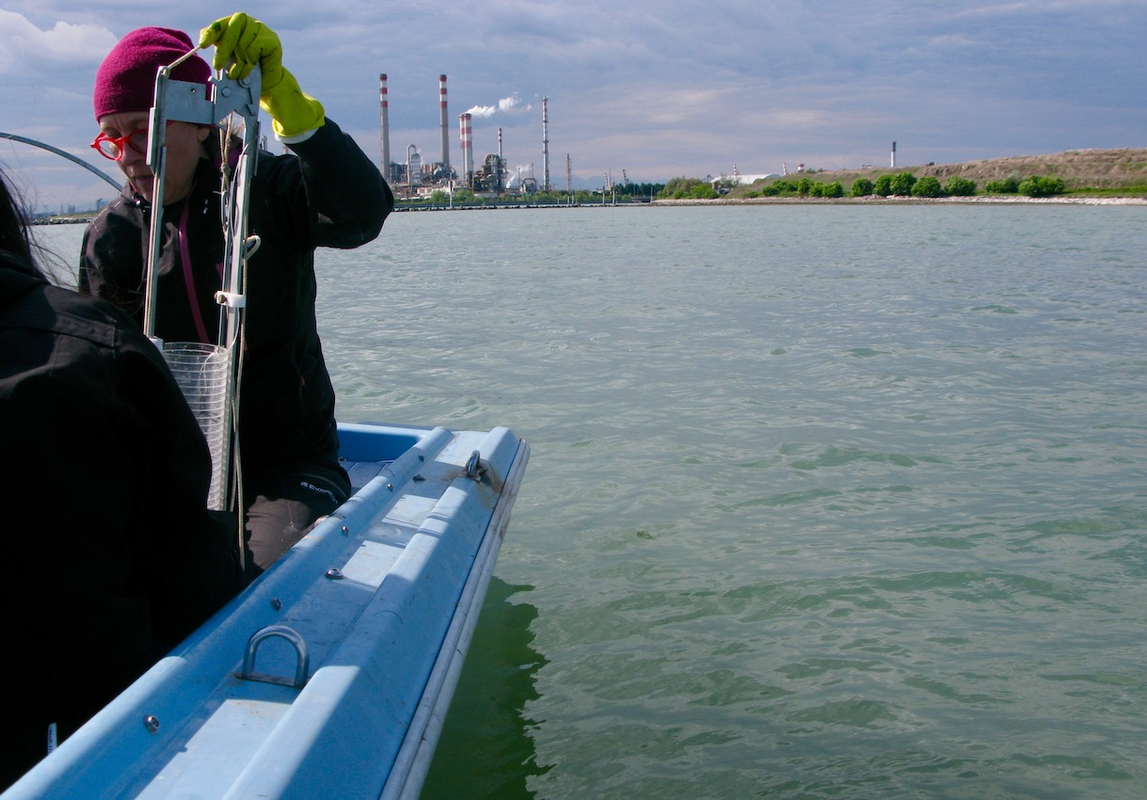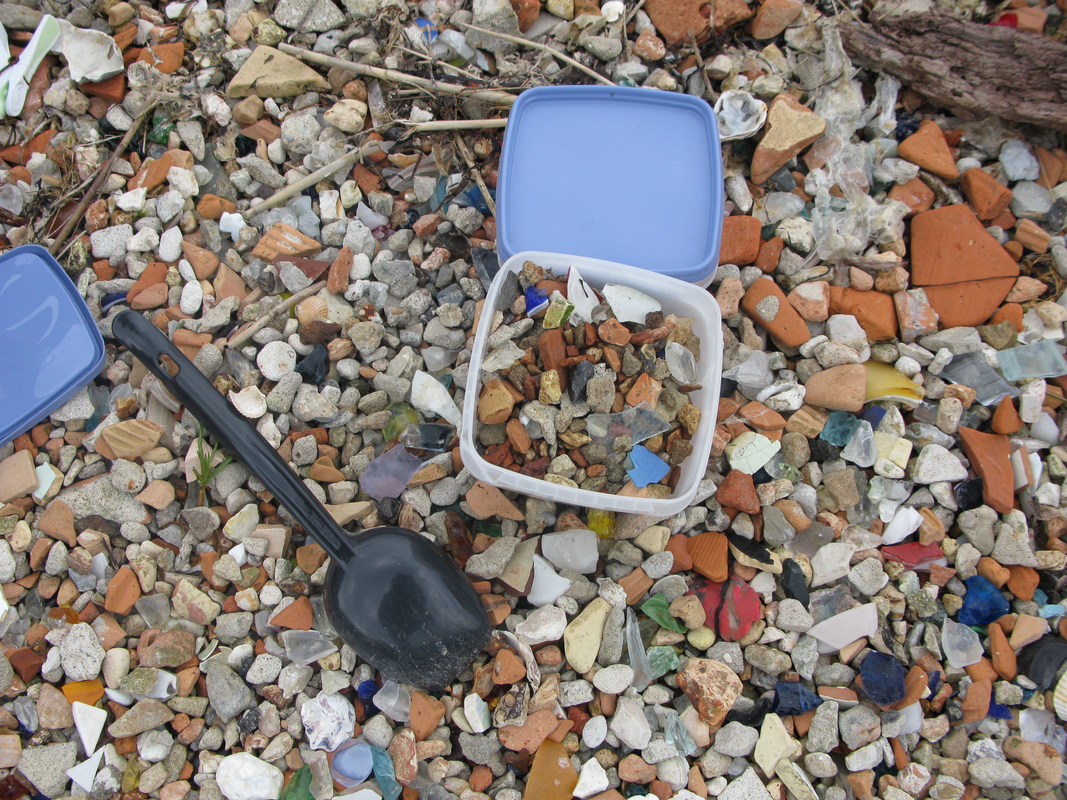Ceramic practitioners are intimately connected to soil through working with clay, minerals and metals that are used as components for clays and glazes. The skill of ceramic practitioners is founded on a ceramic material understanding extending from chemistry to aesthetics. In this article, we discuss environmental concerns via the insights of ceramic practitioners that we, the writers of this article, have developed through our education and professional practice. This is done through presenting the research Traces from the Anthropocene: Working with Soil, which combines artistic research in the field of ceramic art with the environmental research methods of soil contamination.
The focus concerning environmental urgencies is shifting from protection and conservation to the idea of care. Political theorist Jane Bennett (2010: 110-111) explains that environmentalism emerged in the 1970s to protect and more wisely manage the ecosystem that surrounds us. She questions whether environmentalism as an ideology is the best way to proceed in sustainable thinking and acting as a way to understand that we are a part of the environment rather than surrounded by it. Sociologist and anthropologist Bruno Latour (2004: 232) calls for a tool that could deal with the times that we live in with “matters of concern” that direct us to protect and care. Latour (also Puig de la Bellacasa, 2017: 41) argues that matters of fact are only partial, polemical, and political renderings of matters of concern. Matters of fact do not equal reality. Further, feminist science and technology studies scholar Maria Puig de la Bellacasa (2017: 41) states that the attention to concerns opens ways for affective thinking. The practice of care fosters awareness of what we can do and how we contribute to the mattering of the world (ibid.). She proposes that we engage in slow, labour intensive, sometimes messy and political tasks of care, to understand our entangled relations with soil (Puig de la Bellacasa, 2015: 15-17).
A ceramic artist’s view of soil is different to that of a scientist, farmer or builder. One’s relation to soil affects how one cares for it, but also how one attends to it forms what soil is thought to be (Puig de la Bellacasa 2015: 2). Bennett (2010: 56, 60) explains that a scientist aims to know what a material is where a craft person's interest is to see what a material can do and to collaborate productively with it. Anthropologist Tim Ingold (2013: 94) understands the act of making as a process of growth where the maker “joins forces” with the materials, anticipating what might emerge. The craft person thinks from the materials as the dancer thinks from the body, he allegorises. An artefact is born through human involvement in generating the form, but more than a form, it is an engagement with materials (ibid.: 22). Ceramic practitioners attend to their material with care. The physical act of care takes place as kneading, rolling, touching as well as in carefully covering the drying clay and handling the fragile unfired earth. A ceramist’s intrinsic appreciation for clay can be seen as care thinking. One needs to be attentive to the material and avoid working against the material’s propensities to enable the productive collaboration to happen.
The research can be seen as a kind of storytelling, where the insights of particular soil practitioners are used to share facts and narratives of human entanglement with soil. Feminist and cultural theorist Donna Haraway (2016: 105) uses the term response-ability meaning the praxis of care and response. She encourages us to tell stories, as stories strengthen response-abilities. Stories help remember, introduce new knowledge, and enhance collective thinking (ibid.: 29). Hence, in our research, we regard soil as a material mediator, which leads to the traces of the Anthropocene, the geological epoch during which human activity has had a permanent impact on the Earth. Metals are not seen as independent materials in soil but as alloys of geological, biological, and often human endeavours (Bennett, 2010: 60). We use the concept of the Anthropocene to discuss the modifications in the Earth’s surface that result from human activities (Berleant, 2012: 54) in order to better understand how we are in a constant flux with the material environment.
Ceramic practice lays the ground for our focus on heavy metals as the anthropogenic contaminants in soil. In ceramics, metallic oxides are used to introduce colour, texture, flux, and other effects to clays and glazes. We refer to heavy metals as contaminants as they can be both naturally occurring chemical elements in the Earth’s crust and matter appearing in the wrong location [see Infobox A for information on heavy metals as contaminants].
Ceramic practitioners traditionally use local soil as the material for their discipline. The locality of our project is defined by the placement of Research Pavilion #3 in Venice; thus, the context of this study is the Venetian Lagoon area which has been heavily affected by anthropogenic activities throughout the centuries.
In the geosciences, there is a long tradition that considers the Earth itself as an archive (Mattern, 2017: 1). Geographer and landscape architect Seth Denizen (2013: 42-43) states that soil exists in the interval of geological past and future, making it a potent forum to discuss the present, defined by the term "Anthropocene" (ibid.). Within this context – as a sample of a confluence of art practices and science – soil and sediment are seen as a geological archive of human actions as well as a crafting medium. In ceramics, soil is used as the material medium. As craft practitioners, we are active participants in the anthropogenic geology: involved in the extracting and remaking of the geological strata [Figure 1].
Aesthetician Yuriko Saito (2017: 141) explains that we all participate in world-making through our decisions and actions. She proposes that artists, designers, architects, and manufacturers be called professional world-makers as they participate in creating the material world through their practice. The unpleasant truth is that material creation always also involves destruction in the sense that consumption of natural materials effects natural ecosystems, and new objects replace old ones, which then become waste. Denizen (2013: 42-42) states that soil is an archive but also a living body that has "direct reciprocal relation to all the material processes that define daily life." He explains that trash, construction debris, dredged sediments, and petroleum contamination together with green lawns, decomposing bodies, and rock ballast not only alter the formation of soil, but they also form new soil bodies (ibid.: 40) [Figure 2].
Haraway (2016: 1, 4, 29) suggests that in these times of urgencies, we should ‘stay with the trouble’. She talks about times of urgencies and reminds us that we are not living in between Edenic pasts and apocalyptic futures but in a multitude of places, times, matters, and meanings. Because of its everydayness, craft offers a platform for discussing the connections of environmental and cultural materiality. Although contemporary craft emphasises contextual aspects with experimentation, conceptualisation, and narrative elements (Ihatsu, 1998: 150-158), it has its roots in functional forms, everyday objects, and consumption. It is implemented in craft to communicate through materials and the processes related to them. Craft does not only present a symbol of materiality for aesthetic perception and philosophical interpretation but often also the material object itself. Therefore, craft is practically and materially bound to the consumption of natural materials. This artistic research uses craft as a method to gain knowledge and communicate human material relations in the current ecological state. The core of the research is in the material practices which leave traces in the environment. As craft practitioners, we are not distant from these practices, but instead tightly interwoven with them.
Political theorist Jane Bennett (2010: 56) proposes that craft practitioners – as anyone intimate with things – encounter creative materiality with emerging tendencies and propensities that are affected by multiple forces, bodies, and affects with which they come into proximate contact. The intense intimacy (ibid.: 60) to the material can also be seen as educated sensibility formed by experiential and emotional knowledge, which is also called tacit knowledge (Niedderer & Townsend, 2014: 637). This artistic research relies on the knowledge that was achieved and captured in tandem with the evolving creative working process that took place during the study. We use ceramic craft practice to engage with the local environmental and cultural materiality. We see this as a valuable act through which to rethink the relationship between humans and nature profoundly (see also Mäkelä, 2019: 178). In this study, we ask, would working with contaminated soil be able to raise awareness of the relationship between humans and the material world and their entanglements? How can we, as ceramic practitioners, use our skill and knowledge to nourish affective thinking within the ongoing environmental urgencies?
The actual material gatherings of soil samples in Venice were done in the next stage of the study on behalf of the research team, namely Riikka Latva-Somppi and Maarit Mäkelä. The first fieldwork trip took place from February the 6th to February the 13th, 2019. In the following, we will describe the field trip by relying on the research diaries.
Specialists from the Finnish Environment Institute helped us in spreading the word about our research in the hope of forming contacts with the Italian environmental officials. High European soil management officials forwarded our requests, but we received no answers. Finally, an Italian official from the waste department of Veneto responded to our request to meet and discuss the situation in Porto Marghera [Figure 6]. In the working diary, the beginning of the first field trip is described as follows:
Slowly we start to get an idea of the level of contamination, the numerous local environmental authorities, and the institutes that are actively involved... Finally, after three months of preparations, we start our first trip to Venice to meet the people that our web of contacts has found us. (Working diary, Riikka Latva-Somppi, 6.2.2019)
We get off the boat to meet our contact, who takes us to meet a high official in the waste department of Veneto. The tense meeting spells out how devastating the situation in Porto Marghera is. It would be both impossible and a severe health risk to work with the chemically contaminated and carcinogenic soil of the area. However, we are offered any public data on contamination we can specifically point out from the extensive archives of the waste department. We are taken aback by the level of contamination... As we return to the rented flat, an email from the local environmental official awaits us. (Working diary, Riikka Latva-Somppi, 8.2.2019)
In the course of our research, we learned that the heavy metals constitute only one part of the contamination of Porto Marghera. Organic chemistry, PAH, PCBs, and dioxins are also present in the soil and sediments of the area (Campaci, 2019; OECD, 2010: 155). Neighbouring historical Venice, Porto Marghera is now considered the second most contaminated area in Italy (ibid.). The soil in the area has been thoroughly studied, and today its use and deposit are heavily regulated. Multiple companies privately own the industrial site, and it is not accessible for experimental research as our project. In an email, the local environmental officials inform us that even though our project sounds very interesting, it may pose several technical, safety, and regulatory issues and that we would face difficulties in obtaining permits. There would be safety issues in collecting, processing, and exposing samples to the public (Fuin, 2019).
After the conversations with the officials, we decided to approach the hazardous and unreachable soils of Porto Marghera through existing environmental research. There are thousands of contaminants that derive from industrial activity. To discover which contaminants the soil has, one needs to know precisely what one is looking for. Furthermore, we had the means to analyse the soil for its heavy metals but had no tools to work with organic chemistry. Our new hypothesis is that it is difficult, if not impossible, to find clean soil in this urban area and that we will be able to trace the anthropogenic activity using heavy metal soil analyses from samples drawn anywhere in the Lagoon. We decide to proceed with our plan to sample from the accessible urban areas, which are historical Venice and Murano islands. The first sample gathering takes place in Murano, and we use Google Maps to spot a suitable location for the gathering:
We collect our first samples in a public area by the pavement by the dock. A path takes us to the barren land in the centre of the island past the vietato (forbidden) signs. As we walk, we can feel glass crunching under our soles. There are denser areas of glass and construction waste, broken tiles, and small bits of concrete covered with soil and rough vegetation in its wintry state. Grasses, bushes, small trees, and rabbits inhabit the island. The shoreline is a colourful combination of tile, glass, concrete, driftwood, and plastic. Sand and stones are in the minority there. The shoreline reveals the cross section of the island [where the sea had eroded parts of it away and the various layers of material that made up the island were revealed.]. We leave the land quiet. With small plastic bags filled with soil samples in our backpack, we find our way to the vaporetto discussing … the ugly trash of the wasteland and the chemically harmful industrial waste that has leaked into the Lagoon. (Working diary, Riikka Latva-Somppi, 9.2.2019)
We take several samples in Sacca San Mattia [Figures 7-11], one of Murano’s islands, and continue the practice in different locations on Venice’s islands.
Next, we have a meeting with our local artist-activist collaborator in Lido. … [he] wants to show us the old hospital of Lido. The hospital has been empty for a long time. There have been numerous attempts to restore and sell the building, but the land is contaminated, and the project has fallen through several times for financial reasons. We go around the fenced property to the beach, find a spot closest to the gates and dig up a sample where a passerby has dropped a little blue plastic cross on a chain. Later, we find out that the land is contaminated by asbestos. (Working diary, Riikka Latva-Somppi, 11.2.2019)
The collected soil samples were transported to Finland, where they were processed and chemically analysed in the laboratory of Chemical and Metallurgical Engineering at Aalto University [Figure 12]. We also used ceramic material research methods in the ceramic research laboratory premises at Aalto University. These methods included milling the soil and sediments to very fine slips which can then be applied to clay test pieces to see what colours and surfaces they generate when fired [Figures 13-14]. Examining the tactile qualities of the samples, milled materials, and fired pieces was also part of the analyses [Figure 15].
In the soil samples gathered from Sacca San Mattia in Murano lead, arsenic and silver were present in values that exceeded threshold values set for soil contamination [See Infobox C for findings in soil samples]. A discussion with a leading expert from SYKE confirmed that the soil is not extremely contaminated (Reinikainen, 15.4.2019). Still, he agreed that there is an evident trace from the glass industry.
The second gathering trip took place on May 6th, 2019, during the Research Pavilion opening week. We had picked the sites of interest following our research plan as well as the environmental study done in the area. We were interested in areas of possible contamination that were not already specified as being contaminated and were thus not restricted in any way. Our method was random sampling specific sites, as we are limited to one-day fieldwork with a wide area to cover. Our previous sampling trip took us to Murano's artificial island Sacca San Mattia, and we were curious to find out if there might also be similar traces of heavy metals in the sediments close to the island. Room for happenstance was allowed for in finding accessible spots that would enable sampling. We were finally able to find a local guide with a boat that could navigate in shallow waters. Through his knowledge, we found a place to sample along the way from Murano to the city. He also took us to an island located halfway between the historical city and Campalto, an area that has a history of being a deposit for solid waste and relatively contaminated waters (Chapman et al., 2009: 18). We drew samples from three different canals in the historical city, and, finally, we gathered sediment close to an inlet leading to Porto Marghera by the large artificial island of Tresse [Figures 16-19, Video 1].
To the right is the island of Tresse... built in the Lagoon in 1993 to take in the dredged material from the canals of Venice. Piles of grey matter are dripping from the banks of the island where the dredged sediment has been taken in to be transported to the inner areas of the island by little red trucks. We sail the boat round to the northeast side of Tresse. As we approach the spot that, according to previous studies, is a) a spot with a muddy bottom and b) one possibly containing a heightened amount of iron and chromium, we notice a row of sticks coming up vertically from the sea... fishing nets... We put on our thicker plastic gloves and lower the Limnos. (Working diary, Riikka Latva-Somppi, 6.5.2019)
After the second field trip, we returned to the premises of Aalto University with the sediment samples. These gatherings, too, were milled and analysed to discover possible traces of heavy metals. The analyses of the sediment samples confirmed that zinc is a common contaminant in the Lagoon area. A heightened amount of lead was found in the three canals of the historical centre that were sampled in our study. We suspect that this is due mainly to the plumbing in the city. Copper (Cu), too, exceeded the guideline values in the historical city. It was not possible to analyse the samples for bacteria or other organic compounds which may cause health hazards; it was thus agreed that throughout our study the samples would be handled with caution and personal protection.
The third stage of the project, Earth Laboratory, was ongoing for eight weeks in Research Pavilion #3 between July the 8th and August the 28th, 2019. A display showing the experiences, knowledge, and material configurations that were produced in the earlier stages of the project was already set up during the opening week in May. The Laboratory gave tangible forms to the research outcomes and made them visible to the visitors through materials and processes. During Earth Laboratory, the team formed of established ceramic artists, artist-researchers, and two research assistants built 18 pots of 50-100 cm in height. Local brick clay from the collaborating brick factory in the Veneto area was used. The pots were made with a conventional hand-building method, and when the pots were finished, they were painted with the soil samples, which were gathered and analysed in the second stage. Visitors to the pavilion were able to follow this practice-based laboratory. The project was presented through a display that showed outcomes of the material research as well as pictorial and textual narratives of the fieldwork. Several printed articles presenting environmental research on the area were also available for reading.
The brick clay presented its challenges in coiling, which is one of the most primitive ways of forming pottery. In this hand-building technique, coils of clay are layered upon another and joined to form a solid surface. Coiling is simple, yet time-consuming, repetitive labour [Video 2]. To be able to make aesthetically pleasing and stable forms requires skill that can be achieved through tacit knowledge. Relating to the essence of Venetian materiality made struggling with Venetian brick clay when building the forms more meaningful. The process is described in Özgü Gündeşlioğlu’s working diary:
This local brick clay is really challenging. As the name implies, it is meant for brick and not plastic enough for coiling. In the morning, we came across an unpleasant surprise that Catharina's big form had cracked and collapsed, but she is so confident and not disappointed at all. It is related to experience, I think. She said …: "this clay protests, it doesn't want to be formed in this shape". Clay has its own will. It is not passive. (Working diary, Özgü Gündeşlioğlu, 11.7.2019).
It was supposed to be a good day, but we realized that Tzuyu's form had cracked too. The cracks are almost at the same critical place as Catharina's. Those angles are not good for clay. But through this bad surprise, I came across a golden saying, "You have to obey the clay!". Thanks to Catharina. (Working diary, Özgü Gündeşlioğlu, 13.7.2019).
During the first week of Earth Laboratory, we insisted on a specific form, given by the form language of historical pottery from Northern Italy. Only when working with the clay did we discover that the planned forms were not suitable for the local brick clay that we were using. Finally, we accepted the power of material and changed the design. As Soetsu Yanagi (2018: 40) proposes, rather than the design finding the most suitable material, it can be said that material finds its right form.
Research Pavilion #3, which was situated on Giudecca Island, was within easy reach of visitors who could stop by and learn about the ongoing projects and have a discussion with the artist-researchers involved. Curatorial installation and the generated place enabled engagement with the processes of each artistic research project. Earth Laboratory took the form of an open studio and research laboratory, where the visitors could participate in working with the local clay. The visitors also provided valuable insights and personal experiences related to the study, as many of them were residents or long-time visitors of the city and well aware of the environmental problems of the Venice area.
Traditionally studio has been considered the working space of artists, a place where artworks are created. However, being a site of creation is not the only function of a studio (Hoffmann, 2012: 12). As stated by curator James Putnam (2001:7, Mäkelä & Latva-Somppi, 2011), in the early 2000s, there was an emerging tendency in art that shifted the focus from conventional exhibitions to museums as sites of artists’ invention. According to Putnam, a museum, which we consider to be a fairly similar place to the pavilion where Earth Laboratory was displayed, can be an intermediary between the artist and the audience. In settings like this, opening up the creative processes for the audience can be a tool to analyse the process of constructing meaning (Turpeinen 2005: 40). The artistic process can thus function as a research method that can simultaneously provide data for the study and serve as an outcome for the research (ibid.). In the given setting of the artistic research laboratory in Research Pavilion #3, it was possible to merge the borders between agents such as material, practice, audience, practitioner, science, and craft.
As a practice-based process, the Earth Laboratory stage of the Working with Soil project displayed the act of making, revealing the tangible expression and experiences of clay [Video 3]. During this site-specific and hands-on process, visitors were offered a space to be in a close relationship with local material, craft persons, and the act of making. For instance, the display included a sizeable aerial image of the historical city of Venice surrounded by the Lagoon area. The map functioned as a tool to discuss the different regions of anthropogenic contamination in the Lagoon area. The aerial view also revealed the close connection between earth and architecture as the local fired clay gives the colour to the City of Venice in the form of roof tiles .
Finnish architect Juhani Pallasmaa (2005: 31-33) uses the term "haptic city". He explains that natural materials like stone, brick and wood enable us to become convinced of the essence of matter through their surface and that these materials allow our vision to penetrate their age, history, and story. Venice's architecture is full of this kind of natural material, especially yellow and red bricks, which are almost the signature of the city. Seeing the ceramic test pieces side by side with the tile structures of the pavilion walls and the tiled roofs of Venice made from the very same material concretely demonstrated the materiality of local soil [Figures 20-21]. A display of the analyses of soil contamination, plastic containers filled with sediment, and the ceramic test pieces provided a setting where one could see the transformation of soil into ceramics, which can then be used for architecture and functional objects.
During this artistic research, we relied on environmental research to understand the geological environment and its contamination in the Lagoon area. Using the methods of environmental research led to a deeper understanding of the concept of soil contamination and its relations to beliefs, politics, and hierarchies. Furthermore, it also enabled us to widen our perspective through embodied experience and aesthetic perception during the on-site work.
Art educator and potter Kenneth Beittel (1989: 3, 28) proposes that pottery as an earth and process honest craft is a microcosm of humans, nature, and culture. How was our skill and knowledge as ceramic practitioners used to nourish affective thinking within the ongoing environmental urgencies? In this project, the idea of creative materiality is expanded from the intimate and embodied material-craft practitioner relationship to the more open and shared concept of the material as a mediator. We relied on the narrative of the soil to take us to the diverse stories of multiple people, places and times. Our research team was expanded by numerous specialists in environmental research and administration, chemistry and the ceramic- and glass industry. The encounters with locals and visitors added an extra layer to the research, as many of them wanted to share stories related to the ecological concerns in the area. Thus, the material not only offered a contemplative practice to reflect our relationship with soil but also acted as a platform for a collective rethinking of humans, soil and their interrelatedness.
Our understanding was formed by the factual information, but also the unspoken, the dead ends, the unanswered emails and the specialists’ wishes to remain anonymous. The research led us to know “the ugly truth” of the petro-chemical industry but also revealed enchanting stories on how Venetians have used the solid waste produced by the city to construct new islands. Instead of dwelling in the past or trying to solve the future, our craft practice enabled us to engage with the present. Hence, collecting and processing the materials for ceramic practice, building the pots from local clay and firing them in the kilns of the brick factory placed us tangibly in the cycle of remaking soils. Thus, we are not just victims of pollution, but engaged in world-making in multiple ways. As Haraway (2016: 12) states, “It matters what matters we use to tell other matters with”. Stories create open endings and invite us to dwell in complexity together. Details in stories link us to actual responsibilities and nourish care-thinking (ibid.: 29).
Puig de la Bellacasa (2015: 14- 17) proposes that to properly care for soil humans need to think beyond consumption and production. She explains that even in urgent times, we need to seek distance from fear and emergency to be able to care well. She encourages practices that involve embodied and sensorial, intense affective relations with soils. Caring for the material with commitment, concern and empathy is inherent in the ceramic practice. Through this project, we perceived soil as a mediator and examined how craft making can be conceived as a philosophical, ideological, political, and ethical act of care.
Ingold questions whether materials must be made into artefacts before they are enrolled in forming knowledge, or whether could we think with materials (Ingold, 2013: 98). In this project, the artefacts were not seen as the final outcome of the process but as components of the material becoming and meaning making. Documentation, collected and processed materials, crafting practice, and the final artefacts were all both data and ways to communicate the topics related to the research [Figures 22-23]. The material samples, documentation, and artefacts that were under process in Research Pavilion#3 provided a solid storyline that was used to provoke and lead discussions with the audience. The research provoked discussion on local Venetian histories and governmental decisions connected to soil contamination and pollution. Furthermore, anthropogenic soil contamination as a global concern was deliberated. After the project ended, we were able to understand the manifold ways in which the use of soil is entangled with our everyday life. Perhaps the most important insight was the general understanding that anthropogenic contamination exists to different extents in all land where humans are or have been and that we are all active participants in the forming of environmental and cultural materialities.
A ceramist possesses an educated sensibility to her medium. The research provided a space to act and think with soil to construct an understanding of our material relationality to the geological environment. We see this as a response-able way to use our skill to participate in world-making through our practice. The project enabled us to understand the material culture around soil more profoundly. It also provided us with the means to share this understanding among the research group’s participants and visitors, and thus take a step towards a future in which we take better care of the material environment we are part of.
REFERENCES
Athar, Mohammad & Vohora, Shashi B. (2001). Heavy Metals and Environment. New Delhi: New Age International (P) Limited.
Beittel, Kenneth (1989). Zen and the Art of Pottery. Tokio: Weatherhill Press.
Bennett, Jane (2010). Vibrant Matter: A political ecology of things. London: Duke University.
Berleant, Arnold (2012). Environmental sensibility. In Jean-Paul Thibaud and Daniel Siret (eds.). Ambiances in action / Ambiances en acte(s) - International Congress on Ambiances, Sep 2012, Montreal, Canada. International Ambiances Network, 53-56.
Campaci, Paolo (2019). Waste Department of Veneto. Personal communication, 8.2.2019.
Chapman, Conrad S. & Capodaglio, Gabriele & Turetta, Clara & van der Berg, Constant M.G. (2009). Benthic fluxes of copper, complexing ligands and thiol compounds in shallow lagoon waters. Marine environmental research 67 (2009), 17-24. doi:10.1016/j.marenvres.2008.07.010
Denizen, Seth (2013). Three Holes: In the Geological Present. In Etienne Turpin (ed.). Architecture in the Anthropocene: Encounters Among Design, Deep Time, Science and Philosophy. Ann Arbor: Open Humanities Press. https://dx.doi.org/10.3998/ohp.12527215.0001.001
Douglas, Mary (1966). Purity and Danger: An Analysis of Concepts of Pollution and Taboo. Routledge and Keegan Paul.
Fuin, Federico, ARPAV (2019). Personal communication, 8.2.2019.
Gieskes, Joris M. & Han, Seunghee & Rathburn, Anthony & Rothwell, Guy & Pérez, Elena M. & Porrachia, Magali & Barbanti, Andrea & Deyhey, Dimitri D. (2015). Anthropogenic contaminants in Venice Lagoon sediments and their pore fluids: Results from the SIOSED Project. Marine Chemistry 174, 73-84. http://dx.doi.org/10.1016/j.marchem.2015.05.008
Giusti, Lorenzino & Zhang, Hao (2002). Heavy metals and arsenic in sediments, mussels and marine water from Murano (Venice, Italy). Environmental Geochemistry and Health 24(1), 47-65. https://doi.org/10.1023/A:1013945117549
Government Decree on the Assessment of Soil Contamination and Remediation Needs, FINLAND (2007): THRESHOLD AND GUIDELINE VALUES FOR HARMFUL SUBSTANCES IN SOIL
https://www.finlex.fi/fi/laki/kaannokset/2007/en20070214.pdf (accessed 18.3.2019)
Haraway, Donna J. (2016). Staying with the Trouble. Making Kin in the Chthulucene. Durham and London: Duke University Press.
Hoffmann, Jens (2012). Introduction: the artist’s studio in an expanded field. In J. Hoffmann (ed.). The Studio.Massachusetts: The MIT Press, 12-17.
Ihatsu, Anna-Marja (1998). Craft, Art-Craft or Craft-Design? In pursuit of the British equivalent for the Finnish concept “käsityö”. Joensuu: Joensuun Yliopisto.
Ingold, Tim (2013). Making Anthropology, Archaeology, Art and Architecture. New York: Routledge.
Latour, Bruno (2004). Why Has Critique Run out of Steam? From Matters of Fact to Matters of Concern. Critical Inquiry 30, no. 2 Winter 2004, 225-248. https://doi.org/10.1086/421123
Lepp, Nicholas W. (ed.) (2012/1981). Effect of heavy metal pollution on plants. Metals in the Environment, Pollution Monitoring Series. Applied Science Publishers. Department of Biology. Liverpool, United Kingdom: Liverpool Polytechnic 2012;2.
Masindi, Vhahangwele & Muedi, Khathutshelo L. (2018). Environmental Contamination by Heavy Metals. Heavy Metals. Aglan, France: Intech Open, 115–133. http://dx.doi.org/10.5772/intechopen.76082
Mattern, Shannon (2017). The big data of ice, rocks, soils, and sediments. Places Journal, November. https://doi.org/10.22269/171107
Mäkelä, Maarit (2019). A Nourishing Dialogue with the Material Environment. In Kate Fletcher & Louise St Pierre & Mathilda Tham (eds.). Design & Nature. London: Routledge, 173-178.
Mäkelä, Maarit & Latva-Somppi, Riikka (2011). Crafting narratives: Using historical context as a reflexive tool. Craft Research 2, 37–60.
Niedderer, Kristina & Townsend, Katherine (2014). Designing Craft Research: Joining Emotion and Knowledge. The Design Journal, 17 (4), 624-647.
OECD (2010). Territorial Reviews: Venice, Italy 2010. OECD Publishing.
https://read.oecd-ilibrary.org/urban-rural-and-regional-development/oecd-territorial-reviews-venice-italy-2010_9789264083523-en#page9 (Accessed 28.9.2019)
Pallasmaa, Juhani (2005). The Eyes of the Skin: Architecture and the Senses. Great Britain: Wiley- Academy.
Panagos, Panos & Van Liedekerke, Marc & Yigini, Yusuf & Montanarella, Luca (2013). Contaminated Sites in Europe: Review of the Current Situation Based on Data Collected through a European Network. Journal of Public Health, vol. 2013, 1-11.
Puig de la Bellacasa, Maria (2017). Matters of Care: Speculative Ethics in More Than Human Worlds. Minneapolis and London: University of Minnesota Press.
Puig de la Bellacasa, Maria (2015). Making Time for Soil: Technoscientific futurity and the pace of care. Social Studies of Science, 45 (5), 691-716.
Putnam, James (2001). Art and Artifact: The Museum as Medium. London: Thames & Hudson.
Reinikainen, Jussi (2019). Personal communication, 15.4.2019.
Rose, Michael & Dhar, Arun & Brooks, Hilary A. & Zecchini, Fulvio & Gersberg, Richard M. (2006). Quantitation of hepatitis A virus and enterovirus levels in the lagoon canals and Lido beach of Venice, Italy, using real-time RT-PCR. Water Research 40 (12), 2387-2396.
Saito, Yuriko (2017). Aesthetics of the Familiar: Everyday Life and World-Making. Oxford: Oxford University Press.
Sfriso, Adriano & Curiel, Daniele & Rismondo, Daniele (2009). The Lagoon of Venice. Dipartimento di Scienze Ambientali, Università di Venezia and SELC- Società per l’Ecologia delle Lagune e delle Coste, Venezia.
Tonkinwise, Cameron (2019). I prefer not to: Anti-progressive designing. In Gretchen Coombs & Andrew McNamara & Gavin Sade. Undesign: Critical Practices at the Intersection of Art and Design. London: Routledge, 74-84. http://hdl.handle.net/10453/133780
Turpeinen, Outi (2005). Merkityksellinen museoesine. Kriittinen visuaalisuus kulttuurihistoriallisen museon näyttelysuunnittelussa (A meaningful museum object: Critical visuality in cultural history museum exhibitions). D. A. thesis. Helsinki: University of Art and Design Helsinki.
Vecchiato, Marco & Cremonese, Simone & Gregoris, Elena & Barbaro, Elena & Gambaro, Andrea & Barbante, Carlo (2016). Fragrances as new contaminants in the Venice lagoon. Science of the Total Environment 566–567, 1362–1367.
Verità, Marco & Zecchin, Sandro (2009). Thousand Years of Venetian Glass: The Evolution of Chemical Composition from the Origins to the 18th century. In Association Internationale pour l’Histoire du Verre International Association for the History of Glass. University Press Antwerp.
Yanagi, Soetsu (2018). The Beauty of Everyday Things (M. Brase, trans.). UK: Penguin Books.
Zonta, R. & Botter, M. & Cassin, D. & Pini, R. & Scattolin, M. & Zaggia, L. (2007). Sediment chemical contamination of a shallow water area close to the industrial zone of Porto Marghera (Venice Lagoon, Italy). Marine Pollution Bulletin 55, 529–542.
The highest rates of anthropogenic contaminants in the Lagoon are caused by the intensive cultivation on the mainland, the petrochemical industry in the area of Porto Marghera, urban runoff from historical Venice and Mestre, and the glass industries of Murano (Giusti & Zhang, 2002: 47). Through reading existing environmental research from the area, we selected three sites of interest for further investigation [Figure 5]. Our first place of interest was the historical centre of Venice, where the contaminants derive mainly from domestic activities and tourism. The second place of interest was the area of Porto Marghera, where a vast industry has been present for about a hundred years. The island of Murano, which has had a history of glassmaking since the end of the thirteenth century, formed the third place of interest. Murano was selected as it presents a very particular industry as a source of heavy metal contamination and also because it offers a possibility for us as craft practitioners to closely examine the traces of our practices.
In this research, we used artistic and soil contamination research methods combined with immersive multisensorial experiences of the environment prior to the ceramic studio practice [Figures 3 and 4]. The research proceeded in three stages: first, a preliminary study was done to understand the level of contamination in the Lagoon area; then, the artist-researchers proceeded with material gatherings on-site and analyses of the gathered samples with the help of soil contamination specialists and a research engineer from the area of chemical and metallurgical engineering; finally, an open studio entitled Earth Laboratory, took place in the context of Research Pavilion #3, Venice.
The preliminary study took place before the first trip to Venice. During this study phase, we investigated the geological surrounding of Venice, including its history, as well as its geographical and material qualities. We also identified and examined related scientific studies. After familiarising ourselves with the environmental studies, we were also able to identify potential local experts and collaborators in Venice. Towards the end of the first stage, we were able to map preliminary sites for soil and sediment gathering. We hypothesised that the anthropogenic contaminants present in the sediments of the Venetian Lagoon might produce various and different effects when applied to a clay body and fired. In the firing, the material composition of clay becomes ceramic. This transformative process entails changes in material structures and colours. The final effects of metals present in clay materials become visible through these changes. Via the geological research, we identified three sites, all having a history of particular anthropogenic contamination. The principal places of interest were selected as the artificial canals of the historical centre, the Porto Marghera area, and Murano island.
The material gatherings on-site and analyses of the gathered samples were done next. Soil analyses were used to study the anthropogenic traces in the local soil in the Venetian Lagoon area. Soil and sediment samples were gathered using a random sampling method. Instead of mapping the overall contamination of a specific location, singular surface samples were collected. The artist-researchers carried out this part of the study themselves.
A display of these research results and the documentation of the process was built for the high season of Research Pavilion #3. In July, the open studio Earth Laboratory was set in the pavilion for two months for the building of the large clay forms. For the work, we needed local brick clay, which was given to us by a brick factory in the vicinity of Venice. The processed samples of local soil and sediment were used when painting on the raw clay vessels that reference the form language of historic pottery and the inspirational sources for the images were paintings from the Venetian museums.
In addition to serving as a studio space where the big clay vessels were coiled and painted, the laboratory provided an area where the audience could work with local clay. The audience engagement offered a space to physically experience working with clay and simultaneously dwell in the artistic research laboratory, and then reflect on issues concerning the research. In August, a discursive event was organised at which the study was discussed, and expert on contaminated areas and environmental risk assessment Jussi Reinikainen from the Finnish Environment Institute gave a public lecture.
Next, the main steps of the study will be discussed in greater detail. First, we present the three places of interest, the selection of which was based on the findings related to the preliminary study, during which the aim was to obtain a better understanding of our research context, the Venetian Lagoon [See Infobox B for preliminary findings]. Then, we will share the experiences which we gained during the two field trips to Venice and when working in an open studio setting, which we set up in Research Pavilion #3. Finally, we will conclude the exposition by discussing the meaning of material practices, which is the underpinning element of the study.
Video 3 Processed soil and sediment from the lagoon area were used to paint on the large vessels which were made from local brick clay. Video: Riikka Latva-Somppi and Pauliina Purhonen
Figure 6 Discussing the contaminants of Porto Marghera with the official from the waste department of Veneto. Photo: Riikka Latva-Somppi
Video 2 In our project, the red brick clay was found to be more suitable as a colour, but the yellow clay had more plasticity, a quality essential for hand building. Thus, "rosato" (pink) clay consisting of 50% red and 50% yellow clay was chosen for coiling the vessels. Video: Riikka Latva-Somppi
Acknowledgements
The research was conducted by artist-researchers from Aalto University’s Design Department’s EMPIRICA research group in close collaboration with experts on contaminated soil from The Finnish Environment Institute SYKE. The team also included a senior artist, Catharina Kajander, a visiting artist-researcher from Turkey, Özgü Gündeşlioğlu as well as two masters-level students, Tzuyu Chen and Pauliina Purhonen from Aalto University. Audience engagement practices were planned in collaboration with educators and researchers Dena Bagi and Helen Felcey from Great Britain. Environmental operators who kindly forwarded our requests, offered scientific data and responded to our enquiries were the European Soil Data Centre (ESDAC), Istituto Superiore per la Protezione e la Ricerca Ambientale ISPRA, Agenzia Regionale per la Prevenzione et Protezione Ambientale del Venezia ARPAV, Waste Department of Veneto and RemTech Expo. Tile factory Terreal San Marco provided us with local brick clay and indispensable help and information concerning the local clay. Additionally, numerous individuals helped us in overcoming practical challenges and providing local insights, including Lorenzo Secco and Lucia Massari and artist Andrea Curtoni from Biennale Urbana, Venice. The activities during the research on site were documented and archived in the collaborative space of the Research Pavilion #3 in Research Catalogue.
Infobox C
Findings in soil samples
For example, the estimated amount of lead (Pb) naturally present in the soil is set at 1.5-5 µg/g (=mg/kg) in the Finnish legislation (Assessment of Soil Contamination and Remediation Needs, 2007). The traces of lead found in samples from Sacca San Mattia exceed the threshold value of 60 µg/g, and one sample crosses the lower guideline value of 200 µg/g set according to health risks. In addition, arsenic, a metalloid previously used in glass production, is also present in heightened amount. Silver (Ag) is a rare contaminant and has no set values in the Finnish legislation but is clearly higher in the samples than in uncontaminated soil. Zinc (Zn), too, exceeds the lower guidelines in three of the four samples. Zinc is a common contaminant in the Lagoon area (Gieskes et al., 2015: 73) and it has been distributed widely from the industries of the area. Zinc is most common of all anthropogenic contaminants (Reinikainen, 15.4.2019). It is not as harmful to the ecosystem as lead and arsenic and easily leaks into soil very locally from metal objects abandoned or dropped on the ground. The sample from Lido seems to be the cleanest. As we learned, the area is contaminated by asbestos, but even if asbestos were present in the sample, the heavy metal analyses would not reveal it.
Infobox A
Information on heavy metals as contaminants
When heavy metals appear in nature in unwanted places or in a form or concentration that is harmful to the environment or human health they are considered contaminants (Panagos et al., 2013: 2). Heavy metals become concentrated and spread through human activities. They emanate from industrial, agricultural, and domestic activities and contaminate air, water, soil, and their interfaces (Masindi & Muedi, 2018: 118). The nondegradability of heavy metals results in long-lasting concentrations, which end up accumulating in soil and sediments (Lepp, 2012; Athar & Vohora, 2001). Heavy metals also decrease the biodegradation of organic pollution, thus increasing the harm to the environment (Masindi & Muedi, 2018: 121).
Infobox B
Preliminary findings
The Venetian Lagoon is a shallow water basin of about 550 km2, with an average depth of about one metre. It is separated from the open sea by barrier islands (Giusti & Zhang, 2002: 47). The Lagoon is connected to the Adriatic Sea by three inlets. The tidal excursion enables an estimated exchange of more than 50% of the water in 12 hours (Vecchiato et al., 2016: 1363). Because of its exceptional biotope, the Lagoon is one of the most researched coastal basins in the world (Sfriso et al., 2009: 18). The main challenges in the Lagoon area are subsidence, rising sea level, erosion, and chemical pollution (OECD, 2010: 153). The site is unique, yet the anthropogenic contamination in the region nonetheless follows a typical pattern of inhabited coastal areas where agricultural, industrial, and domestic activities, together with port and boat traffic leave their effects in the air, water, and soil. The highest rates of anthropogenic contaminants in the Lagoon are caused by the intensive cultivation on the mainland, the petrochemical industry in the area of Porto Marghera, urban runoff from historical Venice and Mestre, and the glass industries of Murano (Giusti & Zhang, 2002: 47).
Historic Venice was once considered the cleanest city of Europe as the tidal water flushes the canals twice a day (Davis & Marvin, 2004: 183). The sediment in the canals of the city is heavily affected by urban runoff caused by the ancient sewage system, still partly discharging into the canals (Vecchiato et al., 2015: 1363). A microbial study in the area detected hepatitis A and enteroviruses in almost all of the selected nine canals of the study (Rose et al., 2006). Even fragrances from the personal care products consumed by the 56 000 inhabitants and the estimated 20 million tourists who visit the city annually add to the environmental concerns in the Lagoon area (Vecchiato et al., 2015: 1363). Research on fragrance materials and other residues from personal care products assessed that they contribute to the toxicity of the waters and sediments of the Lagoon in a manner comparable to that of the industrial activities (ibid.: 1366). The sediment of the canals accumulates by two centimetres each year and they have to be dredged regularly. The humanmade materials from the ancient sewage system wash slowly into the canals. The deposit contributes to the sedimentation, together with the erosion caused by the turbulence of the motorboats (OECD, 2010: 158).
The industrial site of Porto Marghera was built on marshland and filled with sediment dredged from the canals of the historical city. Later, the landfill was completed with industrial waste (Zonta et al., 2007: 529). Adding to the fact that the port area is founded on contaminated land, numerous studies indicate that industrial activity has since heavily polluted the air, soil, groundwater, and the inner tidal canals (ibid.). The petrochemical industry dumped an enormous amount of chemicals in the sea, especially before stricter environmental regulation began in the 1980s. High concentrations of heavy metals such as lead, cadmium, copper and mercury have been found near the Tresse island where contaminated sediment is disposed (ibid.). The Porto Marghera area is known to be the major source of pollutants for the Lagoon.
In research done on the chemical composition of historical Venetian glass, chemists Marco Verità and Sandro Zecchin (2009: 603- 604) explain that the two major ingredients for Muranese glass were silica in the form of sand and pebbles and coastal plant ash. Their study shows that lead oxide was added only in coloured glasses, but since the end of the 17th century clear crystal lead glass was also produced. They state that around the same time, arsenic became a common constituent in glass batches and that among other commonly used metals were manganese, tin, and iron. In the 19th and 20th centuries, ingredients in glass production have included a variety of metals, including precious metals such as silver and gold and heavy metals unthinkable today, such as uranium. In a study done on marine water, sediments and mussels from Murano augmented levels of Fe, Mn, Zn, Cu, Cr, Pb, Ni, Ag and As were evident (Giusti & Zhang, 2002). Heavy metals play a central role in glass production, giving colour and enhancing the melting and clearing of the glass batch. Arsenic (an alloy) and lead have been common ingredients in clear glass, where silver has been used primarily for mirrors and in stained glass. Metallic oxides give colour to the transparent and opaque glass.
Video 1 Taking sediment samples with a Limnos sampler from Murano and historical Venice. Video: Pauliina Purhonen and Riikka Latva-Somppi
Figure 12 The Laboratory of Chemical and Metallurgical Engineering in Aalto University. Photo: Riikka Latva-Somppi
Figure 4 Preparing a research display of the collected and processed samples in Aalto University 2019. Photo: Maarit Mäkelä


